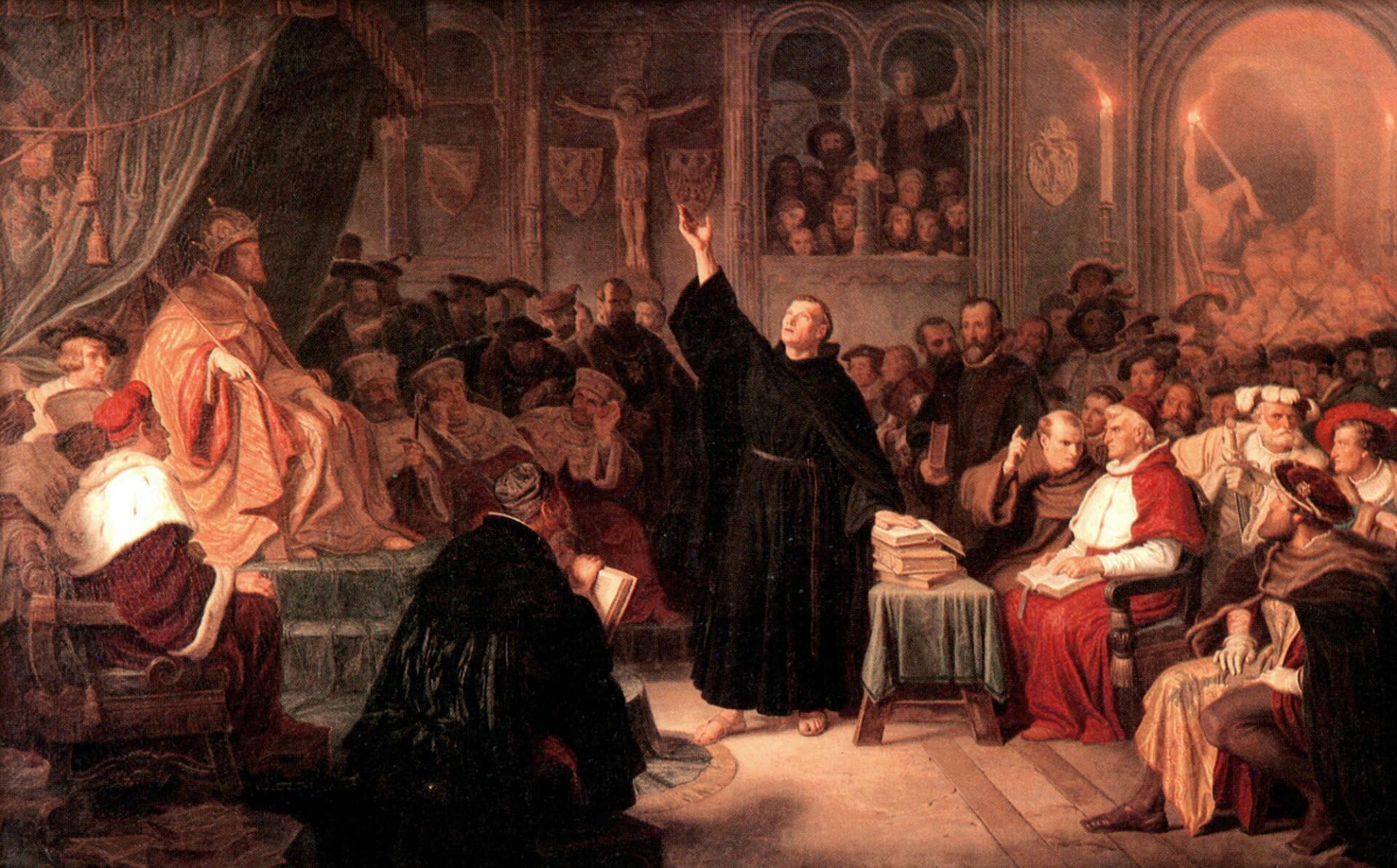In October 1517, at Wittenberg in the German electorate of Saxony, the Augustinian monk Martin Luther drew up ninety-five theses for theological disputation and thereby touched off the sequence of events that produced the Protestant Reformation. Luther’s provocative theses were soon translated from Latin into German and, when printed, were read and debated far beyond the local academic and religious community for which he originally intended them.
The term Protestant dates from 1529, when a meeting of the Diet of the Holy Roman Empire at Speyer rescinded a grant of toleration to followers of Luther that it had made three years earlier. A minority of delegates thereupon lodged a formal “protest” with the Diet. In Europe the term Reformed is often used synonymously with Protestant, and Reformation is the accepted word for the Protestant movement, except in Catholic tradition. which refers to the Protestant revolt.
In fact, the Protestant leaders did prove to be revolutionaries. Although when he drew up his theses Luther had no clear intention of setting up a separate religious body, he soon helped to organize a church outside the Catholic communion. The Lutheran church proved to be the first of many “protesting- or Protestant churches— Anglican, Calvinist, Anabaptist, and dozens more. By the middle of the sixteenth century, the medieval unity of Catholic Christendom had given way to the multiplicity of denominations common today.
In the Middle Ages, the Catholic church had faced many reform movements: the Cluniac, the Cistercian, the Franciscan, and, in the century or so before Luther, movements like those of Wycliffe and Hus that anticipated Protestant doctrines. The Reformation came after the Conciliar movement had made papal authority a subject of open discussion.
More important, the Reformation came in a time of great religious ferment following upon Lollard and Hussite teachings, a time of economic innovation, violence, uncertainty, even a sense of doom. People everywhere were seeking spiritual salvation, renewal, the better and more secure world of Christian promise. Luther emphasized faith, something not visible but inside us all if we could but see it, rather than works, the performance of the established conventions of religion.
Many Christians, lay and clerical, had long been aware that the church needed cleansing. Papal opposition, however, persistently blocked fresh attempts to increase the powers of representative church councils. The great renovation fostered by Queen Isabella and Cardinal Jimenez was restricted to Spanish lands. Meantime, a quiet Catholic renewal had been advanced by the activities of the Brethren of the Common Life. Founded in the Low Countries in the 1370s, the Brethren were lay people, men and women, who pooled their resources in communal living and followed the spiritual discipline of a monastic order without taking religious vows.
Opposed to Scholasticism, the Brethren of the Common Life started schools of their own. Erasmus, who was educated in one of them, complained that the curriculum was too orthodox and rigid, yet he adopted the goals of the Brethren in his own “philosophy of Christ,” with its belief that the example of Jesus should be a guide to daily lives. A similar theme, expressed in more mystical terms, ran through the enormously popular Imitation of Christ, written by Thomas a Kempis (c. 1379-1471), one of the Brethren.
A more radical and sweeping reform was launched by the Dominican friar Girolamo Savonarola (14521498). His eloquent sermons and reputed gift of predicting the future soon made him the most popular preacher in Florence. Sparing no one in his denunciations of what he regarded as un-Christian conduct, he delivered tirades against the Florentine nobles and many of the bishops.
In the political confusion following the death of Lorenzo the Magnificent (1492), Savonarola gained power and prestige in Florence, attracting many enthusiastic supporters. By 1494 he was virtual dictator of the Florentine republic and organized troops of children to collect all “vanities”—from cosmetics to pagan books and paintings—and burn them on public bonfires. This hysterical zeal could not last for long, and when Pope Alexander VI placed Florence under an interdict and excommunicated Savonarola, his popular following began to disperse. In 1498 Savonarola was condemned for heresy, hanged, and his body burned.
All these developments fell on fertile ground. The northern humanists had emphasized a kind of intellectual elegance that promoted critical thought. The spread of lay literacy had not only opened the way to vernacular translations of the Holy Scriptures—and, as any act of translation requires consideration of the nature of language and the appropriateness of specific words, opened the way to discussion of the meaning of texts, and thus to doctrinal debate—but also led to the reading of increasingly secular materials.
The time was ripe for change. A Protestant Reformation was not inevitable— historians do not think in terms of inevitability, since so many factors may put events onto a different course. Rather, it grew out of Luther’s personal experience and the conditions that permitted the spread and fostered the popularity of his ideas.

